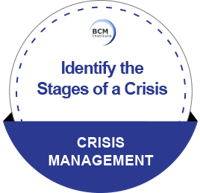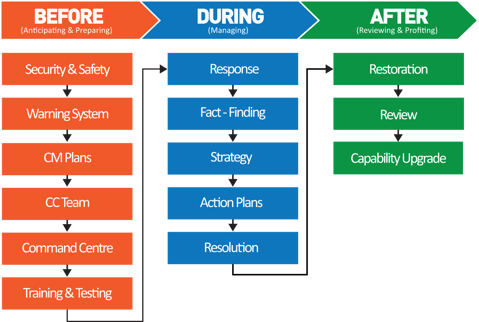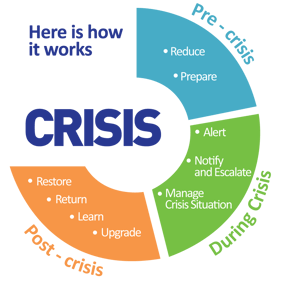Stages of Crisis

When organisations experience a significant problem that threatens their business, they must react quickly and effectively to protect their reputation.
Providing clear information to customers and the media can build support and help the company recover quickly. Having a crisis management strategy before problems occur is an essential part of the process.
Stages and Phases of a Crisis
The activities and management issues at each stage/phase of a crisis are tabulated in the table below.
|
Crisis |
Phase |
Stage |
Description |
|
Before |
Identification/ Discovery |
Pre-crisis |
Before the event. |
|
During |
Preparation/ Planning
Response/ Control
Recovery |
During crisis |
Warning: Indications that there are or may be or could be events liable to cause significant impact to the organization. |
|
Crisis Point: When the event begins to impact the organisation significantly. |
|||
|
Recovery: The acute stage of the crisis has passed, and the organization can focus on a return to normal operations. |
|||
|
After |
Learning |
Post-crisis |
Evaluation of the effects. Repair of the organization. |
Description of Detailed Phases and Stages of a Crisis
This section further explains the details of the “Pre-crisis,” “during,” and “after” crisis stages.

Stages of a Crisis with Detailed Activities
Stages of a Crisis
Description of Detailed Phases and Stages of a Crisis.
The diagrams above show "Stages of a Crisis with Detailed Activities", which showcase the detailed stages of a typical crisis. The chart below shows the "Stages of a Crisis" and describes the three stages of a Crisis: pre-crisis, during crisis, and post-crisis.

Stages of a Crisis
As a process, crisis management is not just one thing. Crisis management can be divided into three stages:
- Pre-crisis
- During crisis
- Post-crisis
The pre-crisis stage concerns prevention and preparation. The crisis response (during the crisis) stage is when management must respond. The post-crisis stage looks for ways to better prepare for the next crisis and fulfils commitments made during the crisis phase, including follow-up information. The tri-part view of crisis management serves as the organizing framework for this entry.
Resource
Goh, M. H. (2016). A Manager’s Guide to Implement Your Crisis Management Plan. Business Continuity Management Specialist Series (1st ed., p. 192). Singapore: GMH Pte Ltd.
Extracted from Chapter 12: Identify the Stages of a Crisis











![[BL-CM] [5] Register](https://no-cache.hubspot.com/cta/default/3893111/82024308-16f4-4491-98be-818a882c6286.png)

![Email to Sales Team [BCM Institute]](https://no-cache.hubspot.com/cta/default/3893111/3c53daeb-2836-4843-b0e0-645baee2ab9e.png)





